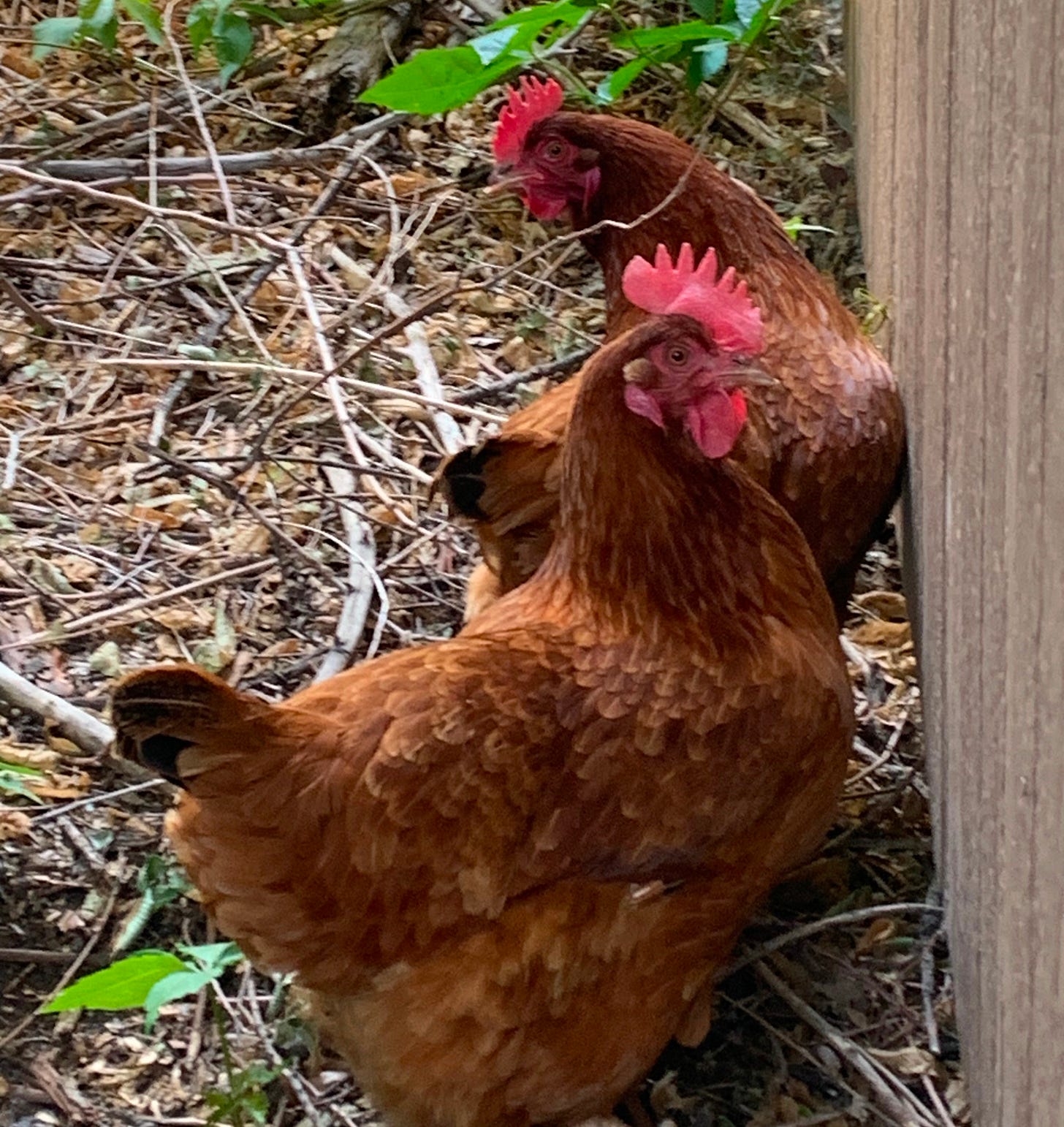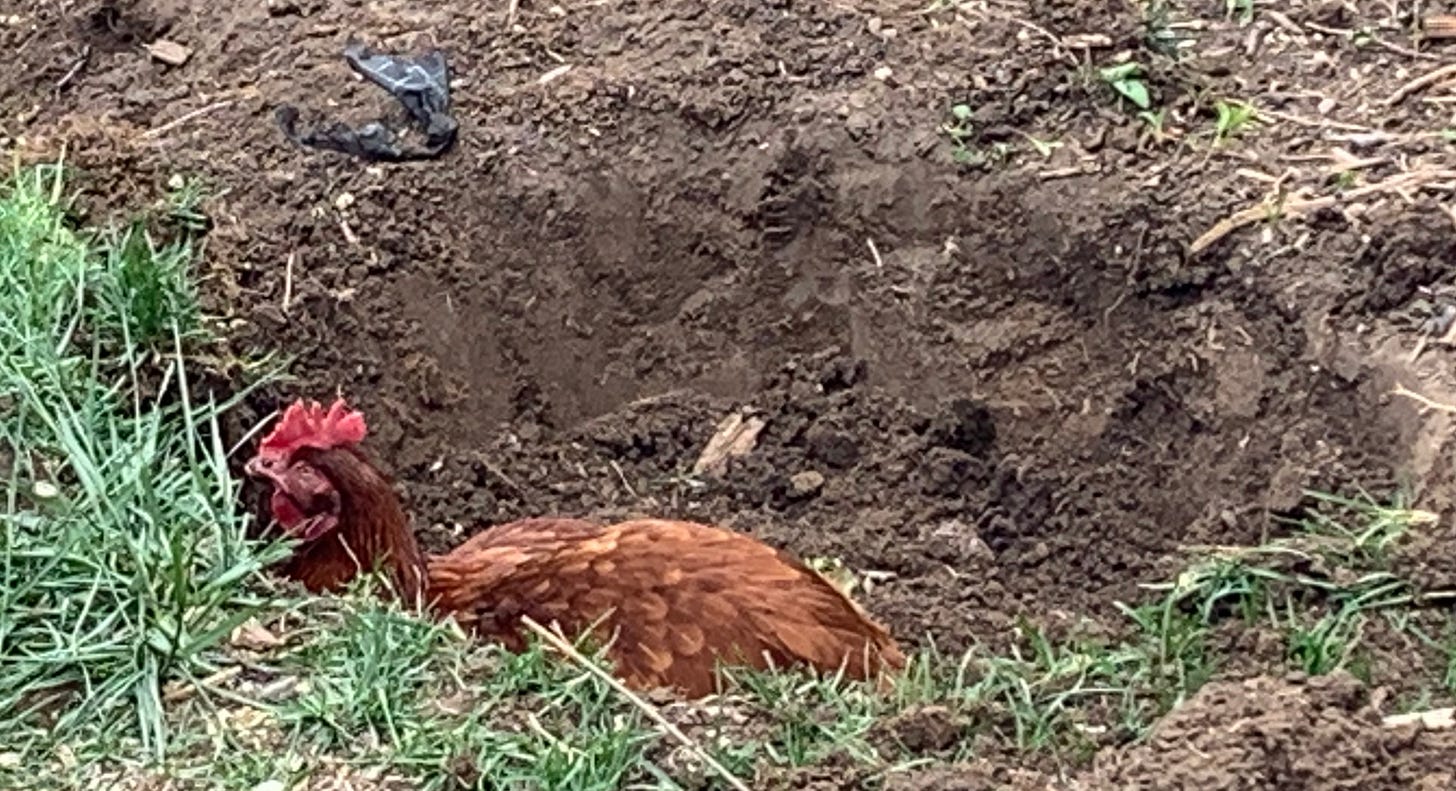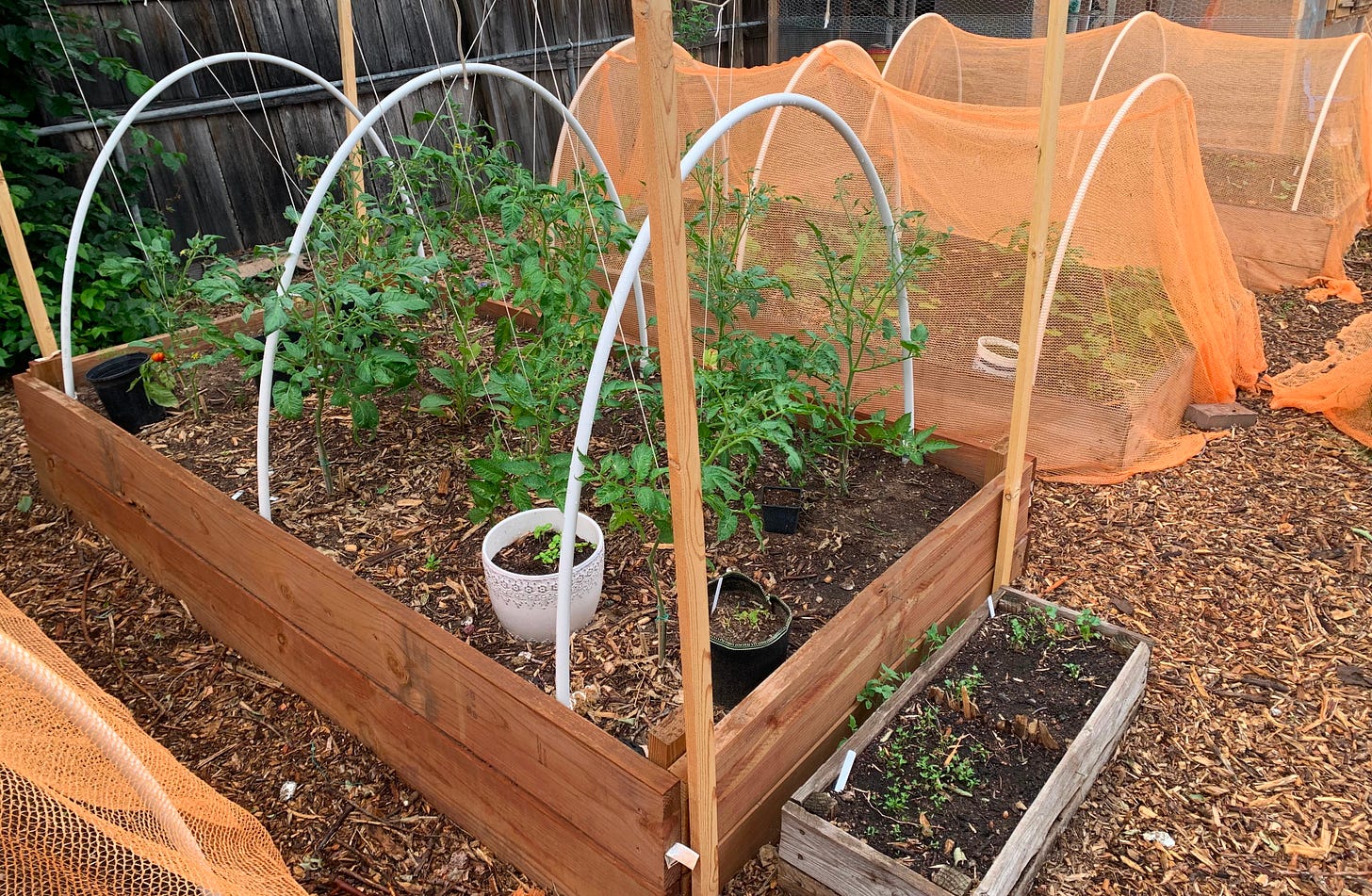How to write hopeful sci-fi futurism when everything sucks
Sourcing knowledge and optimism from revolutionary history and community action
Dear readers,
Today’s post is the promised essay on how my volunteer work, community-building activities, and various forms of resistance help me write fiction set in hopeful, realistic futures despite the apparent downward trajectory of our present dystopia.
First, some housekeeping: I want to hear from you about the kind of content you’d like to see more of in this newsletter. Updates on my writing career and publications are a given—you’ll be the first to know when I have new stories out or when I’m ready for ARC readers to review advanced copies of my novels. Beyond that, what are you most interested in reading about?
Please comment on this post if you’re particularly excited about any of the following topics:
My writing process: E.g., Collaborative writing (What’s it like to write a novel with a coauthor? How does it work, logistically? Why do it? What are the hardest parts?)
Hot takes: E.g., an essay on why I no longer think we should cure human aging even though I used to do aging research.
Reviews: books, film/TV, board games. For example, I recently read Venomous Lumpsucker by Ned Beauman and I’ve been recommending it to everyone I know. Want to hear my take on it?
Essays about the speculative fiction craft and industry: E.g., the distinct value of dystopian fiction vs. optimistic futurism for inspiring readers to be a part of meaningful change in real life.
Science posts: 1) A deeper (and hopefully accessible) dive into some of my published research, 2) The science I’m excited about right now, or 3) The science I’m learning for my various books.
Chicken photos/videos/anecdotes: I have five laying hens, mostly named after famous witches—Glinda the Good Chick, Minerva, Thomasin, and Ditchwater Sal. The fifth is named Heihei after the chicken in Moana due to uncanny personality similarities. I could watch these girls for hours without getting bored.

If you’d like to hear my thoughts on a topic not listed above, or want me to elaborate on anything in my recent get-to-know-me post, feel free to pitch it in the comments!
Why we need hopeful sci-fi futurism when everything sucks
I’ll start with a quote from Aaron Bushnell, the U.S. Air Force serviceman who self-immolated outside the Embassy of Israel in D.C. in 2024, in protest of the ongoing U.S.-Israeli genocide of Palestinians. This is what he had to say about why the work of envisioning a better future is so critically important:
I’ve realized that a lot of the difference between me and my less radical friends is that they are less capable of imagining a better world than I am. I follow YouTubers like Andrewism that fill my head with concrete images of free, post-scarcity communities, and it makes me so much more prepared to reject things about the current world, because I’ve imagined how things could be and that helps me see how extremely bullshit things are right now.
What I’m trying to say is, it’s so important to imagine a better world. Let your thoughts run wild with idealistic dreams of what the world should look like, and let the pain and anger at how it’s not that way flow through you. Let it free your mind and fuel your rage against the machine.
It’s not too late for you or anyone. We can have the world of our dreams tomorrow, but we have to be willing to fight today.
That’s why I write fun stories set in bright, achievable futures: because I aim to inspire people to take personal risks that will help bring that future about. In my recent article about a futurism brainstorming collab at the National Renewable Energy Lab, I wrote:
Through my work in labor and tenant organizing, I’ve learned that one of the greatest hurdles to creating positive change is helping people believe they deserve better—and showing them that better conditions are truly possible.
It’s easy to imagine what a sustainable, just future could look like. As humanity continues to optimize clean energy technologies, regenerative agriculture, etc., visions of better worlds that are technically possible get brighter and clearer. The difficult task is imagining how we get there from here, when efforts to end genocides, halt climate change, and slow biodiversity loss are met with such brutal resistance from capitalists and their enablers. It can be hard to see a way out of this mess when we’re in the thick of it and things only seem to be getting worse.
Which brings me to…
How to write hopeful sci-fi futurism when everything sucks
This post isn’t my opinion on what optimistic sci-fi (or the “Solarpunk” subgenre) should or shouldn’t be—although, after reading climate fic writer Andrew Dana Hudson’s great essay, “Political Dimensions of Solarpunk...Ten Years Later: We've spent a decade imagining better futures. Now what?” I do have some fresh thoughts on the topic. (Let me know in the comments if you want to hear them!) This post is about where I source the knowledge that equips me to write hopeful futures that I truly believe are achievable.
You can read more about my two upcoming novels in my recent get-to-know-me post, but briefly, they are young adult (YA) science fiction books set 300-400 years from now in a sustainable, post-capitalism Earth, where humanity is still grappling with the downstream effects of anthropogenic climate change and mass ecocide.
When I sit down to write in these worlds, it’s always helpful to remember that the current system of imperial capitalism I live within is endlessly extractive and inherently unsustainable, and thus—by definition—must end. Humans will either transition to a sustainable mode of survival on this planet or we will die out when we’ve finally made this biosphere uninhabitable for ourselves.
I’m not interested in writing stories about the latter scenario because fear of a bad outcome, without a roadmap for how to avert it, only breeds nihilism and inaction. So I spend a lot of time researching how to make sure a sustainable transition happens—and as soon as possible, in a fair and just way. That means reading about transformative movements like the Vietnamese Communist Revolution, the Cuban Revolution, the Chinese Socialist Revolution, the Black Power movement in the U.S., and the Haitian Revolution, which is still the only known successful slave uprising to ever result in the creation of a state governed by former slaves. One cannot write realistic futurism without knowledge of the relevant history. To sketch out the logistics of changing things for the better, I learn how things have been changed for the better before.
I also read about sustainable transitions that are already quite advanced in other parts of the world such as China, which has made incredible strides toward eliminating its dependence on fossil fuels, accelerating natural carbon sequestration via plants, and establishing green infrastructure.
And I would be remiss not to mention how much inspiration I draw from realistic sci-fi futurism like Everything For Everyone: A History of the New York Commune, 2052-2072 and Ministry For the Future, and the differences between their prescribed paths for reaching those bright futures.
In addition to this theoretical research, I also do empirical research—I collect knowledge through direct observation and experience. In other words, I engage with the real work of making positive change in my own life, both by building the world I want to live in and dismantling the world that sucks. These actions equip me to write a way out of this mess because 1) my faith in humanity's fundamental goodness is renewed daily, and 2) I get to experience firsthand how it is possible, and how possible it is, to change things in my sphere of influence.
Learning by doing: changing the world now
Several of my IRL world-building activities are centered around the vision of living a less individualistic, more community-oriented life. For example,
Meeting neighbors, sharing food, and making friends. Whenever I have extra eggs or baked goods, I knock on a few doors in my neighborhood that I haven’t been to before and give away food. This is an easy way to make friends that live close-by. I also make friends by going to affinity groups and shared-hobby meetups around Denver, and intentionally building relationships with the like-minded folks I’ve clicked with.
Hosting frequent group meals with friends and neighbors. In addition to one-on-one or small-group friend hangs (which are important!), my partner and I host monthly group meals where we eat, talk, play games, and make music in impromptu jam sessions. We focus on having fun together and getting to know each other better. This is intentional relationship-building; this is community.
My community is expanding our collective activities to include:
Grocery shares: buying wholesale produce and dry goods at Restaurant Depot and dividing them during monthly grocery pickup parties. Here’s my template grocery-share coordination spreadsheet, in case you want to start your own!
Informal knowledge sharing events. At a recent meal, we mapped out things we want to learn and could teach each other in an informal skill share/teach-in series:

Skill-share topics included sewing and mending, composting and soil regeneration, gardening, seed saving, and chicken husbandry, to name a few. Such skills can enhance community resilience to supply chain disruptions and economic instability.
It’s important to recognize that, when divorced from meaningful efforts to dismantle present systems of oppression, building community resiliency with my relatively secure friends and neighbors makes my world safer but doesn’t address larger issues of unsustainability and injustice. However, when coupled with efforts to directly challenge oppressors, defend the oppressed, and serve the underserved, the act of building alternative, community-based means of survival is revolutionary. We must learn to take care of and defend each other because the existing power structure will neither provide for nor protect those who seek to change it.
Here's how communities like mine can challenge oppressors and serve the underserved:
Join the local anti-ICE rapid response network. Where I live, the Colorado Rapid Response Network (CORRN) mobilizes community members to respond to local Immigration & Customs Enforcement (ICE) activity. You can help protect your vulnerable neighbors from arrest and deportation by filling volunteer roles such as “confirmers,” who are dispatched to verify reported ICE activity before triggering community defenses.
Pooled resource donations. Giving away money is such an easy way to make a hugely impactful difference on a short-term timescale. For example, the Immigrant Freedom Fund pays the bonds of people caged in civil detention at the ICE Facility in Aurora, Colorado. More great orgs to donate to here!
Join a local group like Denver anti-war action and take some risks to raise awareness of evil entities like Palantir, the Denver-based company that sells AI tools to Israel and the U.S. government for the precise, violent targeting of Indigenous people, immigrants, and others.
Group volunteer outings. There are a LOT of amazing orgs doing incredible work in Denver and wherever you live. Here are just a few that my friends/neighbors are involved in—and we’re planning some group volunteer outings to support these orgs together!
Metro Caring: A FREE grocery store where families in need can “shop” by appointment to receive free groceries.
Denver Democratic Socialists of America (DSA) has an abolition working group that does jail and court support (e.g., for activists and immigrants), city budget awareness and advocacy work, food distribution to at-risk immigrant families, and more.
Mutual aid Monday: Among other projects, this group runs weekly events outside City Hall to serve food and give basic necessities to our unhoused neighbors.
Denver Urban Gardens: A local nonprofit that creates sustainable, food-producing neighborhood community gardens and food forests all over the city.
Book Give: A local nonprofit that distributes donated books to individuals, schools, and nonprofits.
Grow Local Colorado: A nonprofit that helps transform residential Denver yards into gardens and collects food harvests for distribution to local families in need.
I’ve also fought for a better future through labor organizing, tenant organizing, student activism, and more—which I covered in the “Organizing and Activism” section of my recent get-to-know-me post. My friends have been shaping the world they want to live in through local policy advocacy (housing justice, land use, green infrastructure); native plant growing, giveaways, and rogue planting; and volunteer tutoring.
These activities teach me how real change happens and help me believe humans won't let a few bloodthirsty billionaires drive us to extinction. They show me how people can contribute meaningfully to the long-term goal of abolishing unjust systems while beginning to build the world we want now—in our neighborhoods, residential buildings, and workplaces.
One crucial caveat: the above strategies are impactful but insufficient. As Charles E. Cobb Jr. wrote, This Nonviolent Stuff'll Get You Killed. I don't believe in a purely nonviolent path forward because those in power perpetrate daily violence—bombings, police brutality, deportations, medical neglect, forced starvation, forced birthing. The positive futures I write emerge through organized, armed uprisings of working-class and oppressed people.
But learning to care for and protect one another is the first step toward a brighter someday.
Thank you for reading, as always, and for being on this journey with me.
Love,
Rachael










As a Colorado based writer of speculative/dystopian resistance fiction. I would just love to read more on the craft and industry…thanks!
Jason
The Colorado Switchblade Substack
Well, now that you previewed them, I would absolutely love to hear more Hot Takes and Reviews. Also, I learning more about speculative fiction craft and industry would be super interesting! And now, Venomous Lumpsucker moved up my list, I’ll have to check it out!